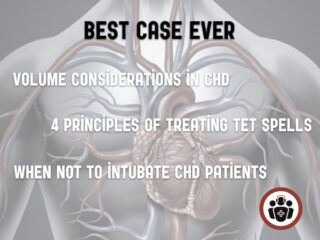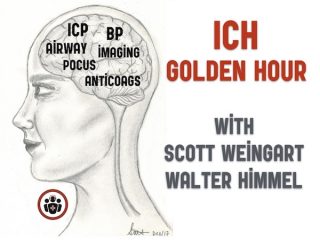Resuscitation
CritCases 10 Hyponatremia Associated Seizures
In this EM Cases CritCases blog - a collaboration between STARS Air Ambulance Service, Mike Betzner and EM Cases, a middle aged woman presents to a rural ED with headache and vomiting, normal vital signs with subsequent status epilepticus and serum sodium of 110 mmol/L. What management recommendations would you make to the rural ED physician, the transport team and in your ED with regards to treatment of seizures, safe correction of hyponatremia, airway management, search for underlying cause and prevention of Osmotic Demyelenation Syndrome?
Ep 110 Airway Pitfalls – Live from EMU 2018
The last decade has seen a torrent of literature and expert opinion on emergency airway management. It is challenging to integrate all this new information into a seamless flow when faced with a challenging airway situation. In this live podcast recorded at North York General's Emergency Medicine Update Conference 2018, Scott Weingart and Anton Helman put together the latest in emergency airway management by outlining 6 common airway pitfalls: Failure to prepare for failure, failure to position the patient properly, failure to optimize oxygenation, failure to optimize hemodynamics, failure to consider an awake intubation and failure to prepare for a cricothyrotomy...
BCE 71 Cricothyrotomy and the Value of Simulation Training
In anticipation of EM Cases Episode 110 Airway Pitfalls Live from EMU 2018 with Scott Weingart, we have Dr. Shira Brown tell her Best Case Ever of a pediatric trauma patient who required a cricothyrotomy. She explains how, despite working in a non-trauma center with limited resources, her team was well prepared because of the robust simulation program specifically designed for practicing emergency physicians that she had developed in her region. We also discuss the advantages and disadvantages of the scalpel-Bougie vs scalpel-finger-Bougie cricothyrotomy techniques and to maintain an optimistic attitude in seemingly futile cases...
BCE 66 CHD with Bronchiolitis: A Delicate Balance
When patients with known congenital heart disease present to the ED with common illnesses we need to consider how their physiology might alter our approach to those common illnesses. Max Ben-Yakov guides us through his Best Case Ever of a CHD patient who presents with bronchiolitis and gives us some tips on how best to approach these fragile patients in a crisis situation...
CritCases 9 Pre-Eclampsia and Preterm Labor – Time Sensitive Management
In this CritCases blog we present a case of a 30 week gestational age pregnant woman with high blood pressure, headache, blurry vision and pelvic cramping. We discuss the management challenges of transporting a patient with severe pre-eclampsia and preterm labor, with special attention to dosing of magnesium, antihypertensive agents choice, and indications for steroids, tocolytics and antibiotics.
Ep 104 Emergency Management of Intracerebral Hemorrhage – The Golden Hour
There exists a kind of self-fulfilling prognostic pessimism when it comes to ICH. And this pessimism sometimes leads to less than optimal care in patients who otherwise might have had a reasonably good outcome if they were managed aggressively. Despite the poor prognosis of these patients overall, there is some evidence to suggest that early aggressive medical management may improve outcomes. As such, the skill with which you manage your patient with ICH in those first few hours could be the most important determinant of their outcome. In this Golden Hour you have a chance to prevent hematoma expansion, stabilize intracerebral perfusion and give your patient the best chance of survival with neurologic recovery.







